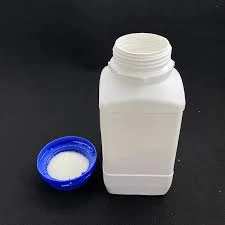Removal of PFAS from Water Understanding the Challenges and Solutions
Per- and polyfluoroalkyl substances (PFAS), often referred to as forever chemicals, have garnered significant attention in recent years due to their widespread presence in the environment and potential health risks to humans and wildlife. These synthetic compounds are used in various industrial applications and consumer products, including non-stick cookware, waterproof clothing, and food packaging. One of the most pressing issues surrounding PFAS is their prevalence in water sources, necessitating effective removal strategies to safeguard public health and the environment.
The Challenge of PFAS in Water
PFAS are notorious for their chemical stability, which makes them resistant to degradation in the environment. This persistence leads to their accumulation in water bodies, posing significant challenges for water treatment facilities. PFAS can enter water systems through various pathways, including industrial discharges, runoff from landfills, and even from commercial products. Once in the water, they can easily contaminate drinking water supplies.
Research has linked PFAS exposure to various health concerns, including immune system effects, hormone disruption, and an increased risk of certain cancers. Consequently, public health organizations and regulatory agencies are increasingly focused on establishing guidelines and regulations to limit PFAS contamination in drinking water.
Removal Techniques
Several methods have been developed to effectively remove PFAS from water. Among them, adsorption, ion exchange, and advanced oxidation processes stand out as the most widely researched techniques.
1. Activated Carbon Filtration Activated carbon is known for its adsorption capabilities. When water is passed through a carbon filter, PFAS molecules adhere to the surface of the carbon. This method is particularly effective for longer-chain PFAS compounds. However, it may require frequent replacement of the carbon media, and its efficiency can vary based on the specific types of PFAS present.
removal of pfas from water

2. Ion Exchange Resins This method employs resin materials that can selectively bind to PFAS ions. The process involves the exchange of PFAS ions in water with other ions in the resin. Ion exchange is effective at removing shorter-chain PFAS but may require additional treatment to manage the concentrated waste produced.
3. Advanced Oxidation Processes (AOPs) AOPs utilize strong oxidants, such as ozone or hydrogen peroxide, often in combination with UV light, to break down PFAS molecules into non-toxic byproducts. This method shows promise for treating highly contaminated water but requires careful control of operating conditions and may entail higher operational costs.
4. Membrane Technologies Techniques such as reverse osmosis (RO) and nanofiltration can effectively separate PFAS from water. These methods use semi-permeable membranes that allow water to pass through while rejecting larger PFAS molecules. Although highly effective, membrane filtration can be cost-prohibitive and requires ongoing maintenance.
Regulatory and Future Perspectives
As awareness of PFAS contamination grows, regulatory frameworks are evolving to address this issue. In the United States, the Environmental Protection Agency (EPA) has proposed setting enforceable drinking water limits for specific PFAS. Similarly, jurisdictions around the world are establishing regulations and initiatives aimed at minimizing PFAS discharge into waterways.
The resolution of PFAS contamination in water is an ongoing challenge that necessitates collaboration among scientists, regulators, and water treatment professionals. Research is essential for developing new, cost-effective technologies that can more efficiently target and remove a broader range of PFAS compounds.
Conclusion
Effective removal of PFAS from water sources is critical for protecting public health and preserving ecosystems. While several strategies exist, ongoing research and innovation are necessary to enhance the efficiency and cost-effectiveness of these methods. Addressing PFAS contamination requires a concerted effort from all stakeholders to ensure that clean, safe drinking water remains accessible for future generations. As we continue to confront this environmental challenge, the development and implementation of robust removal technologies will play a pivotal role in mitigating the risks associated with these persistent pollutants.

